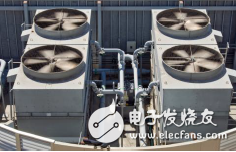Heavy load pressure sensor application
Whether it's the pressure from a hydraulic measurement control circuit that provides feedback for an HVAC system's pump pressure, or the pressure of the coolant flowing through the system, heavy-duty sensors are capable of delivering a high-level signal. As design engineers face the growing challenge of creating more complex control systems, they must now incorporate more feedback signals than ever before. This has led to a greater need for components that offer high accuracy, lower overall cost, and ease of integration. Traditional control systems often rely on pressure switches, which open and close around a set point and typically only provide a binary output. These systems are mainly used for basic monitoring. In contrast, modern systems using pressure sensors can detect pressure spikes in real-time, providing early warnings before a hazard or failure occurs. By connecting the sensor to a computer, users can accurately monitor and control the system in real time. Pressure data is also essential for measuring system performance dynamically, tracking usage patterns, and ensuring energy efficiency. The use of sensors allows for more detailed and efficient data collection.
In short, heavy-duty pressure sensors are robust devices designed with a housing, a metal pressure port, and the ability to output high-level signals. Many of these sensors come in cylindrical shapes, housed in either metal or plastic casings, with a pressure port on one end and a cable or connector on the other. They are commonly used in extreme environments such as high temperatures or areas with significant electromagnetic interference. Industrial and transportation industries often rely on these sensors to monitor fluid pressures, including coolants and lubricants. Their ability to detect pressure spikes quickly helps identify issues like blockages and enables immediate corrective action.
As control systems become more intelligent and complex, sensor technologies must evolve to meet the increasing demands of modern applications. The era of sensors requiring signal conditioning and calibration is over. When designing, implementing, and deploying a sensor, engineers no longer have to worry about functional issues. However, with so many sensor options available on the market, quality varies widely, making careful selection crucial. It’s important to evaluate factors like reliability, calibration, zero compensation, sensitivity, and total error range before making a choice.
Before finalizing a sensor purchase list, it’s essential to review various application scenarios and consider alternative solutions that best meet your design requirements. Over the past few decades, control and monitoring systems have undergone significant transformations, driven by increased complexity. These changes include the shift from manual systems to electronic-based controls, the integration of multiple components into single units, and a stronger focus on cost-efficiency. For heavy-duty applications, environments can vary widely—ranging from large temperature extremes (such as -40°C to 125°C) to harsh media like refrigerants, oils, brake fluids, and hydraulic fluids. While these may not be the most extreme conditions, they represent the majority of industrial and transportation settings.
Heavy-duty pressure sensors are widely used in several key areas:
- Used in HVAC/refrigeration air conditioning systems to monitor system performance, control compressor inlet and outlet pressures, roof chillers, refrigeration rooms, refrigerant recovery systems, and compressor oil pressure.
- Applied in air compressors to monitor performance and efficiency, including compressor inlet and outlet pressures, filter pressure drop, cooling water inlet and outlet pressures, and compressor oil pressure.
- Employed in transportation applications to maintain heavy equipment by monitoring critical systems such as pneumatics, light-duty hydraulics, brake pressure, oil pressure, transmissions, and truck/trailer air locks.
With numerous types of sensors available, the quality can vary significantly. Therefore, it's crucial to thoroughly analyze potential products based on their reliability, calibration accuracy, zero compensation, sensitivity, and total error range. Careful evaluation ensures that the chosen sensor meets both performance and longevity expectations.

Figure: In HVAC/refrigeration air conditioning applications, heavy-duty sensors are used to control compressor inlet and outlet pressures, rooftop chillers, and other recovery and pressure systems.
When selecting a sensor for industrial or transportation applications, several criteria should be considered. First, the sensor must be reliable and consistent, ensuring that any unit can be swapped without affecting system performance. Second, cost is a major factor, especially when replacing older components with more advanced ones. The cost isn't just about the sensor itself but also the overall system replacement. Are you replacing an existing component? Do you need pre-calibrated or fully compensated sensors?
Configurability is another key aspect. When choosing a sensor, consider whether it's standardized or customizable. Customization options may include connectors, pressure interfaces, reference pressure types, ranges, and output styles. Whether you're looking for a standard or configured product, it's important to ensure that the selected sensor can meet your exact design needs and be delivered quickly. Additionally, being able to obtain samples swiftly can help avoid delays in your product launch timeline.
Zro2 Ceramics,Zro2 Ceramic Rod,Zro2 Ceramic Plate,Ceramic Parts
Yixing Guangming Special Ceramics Co.,Ltd , https://www.yxgmtc.com